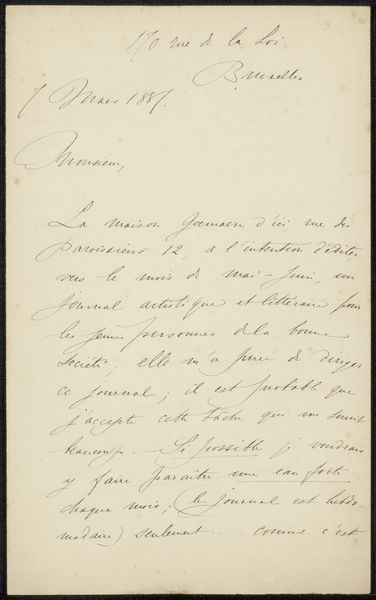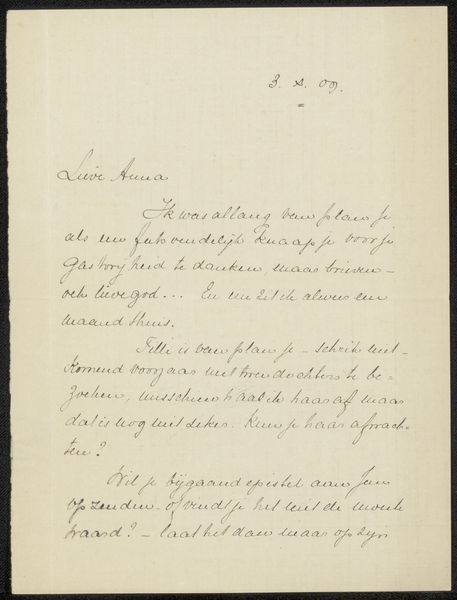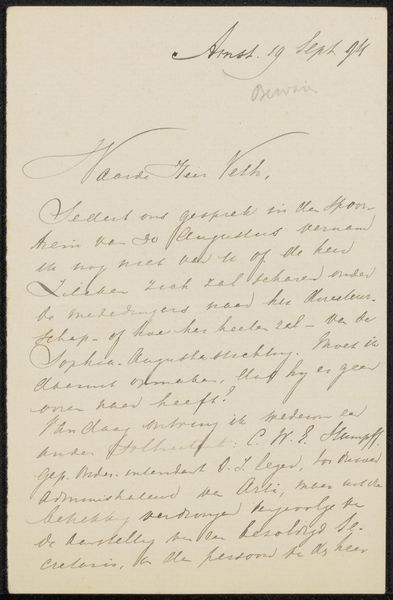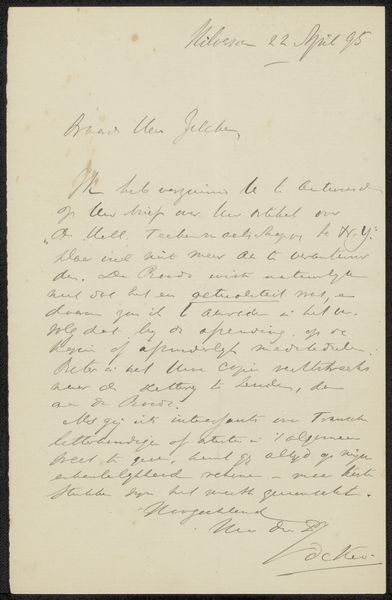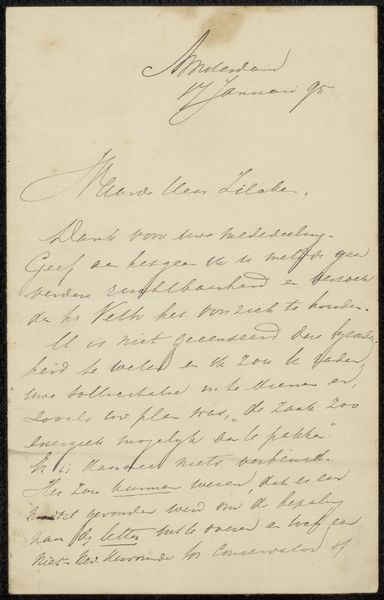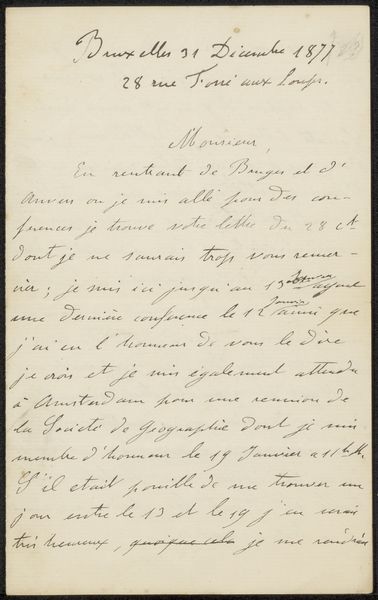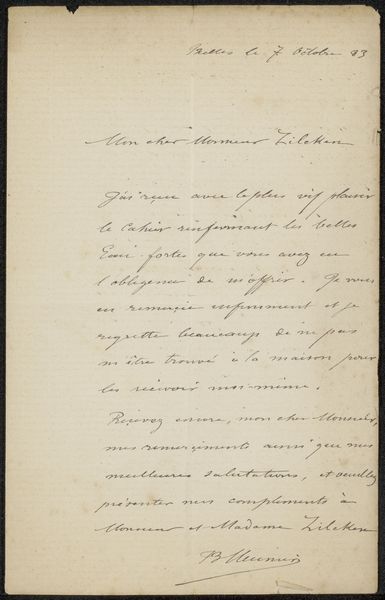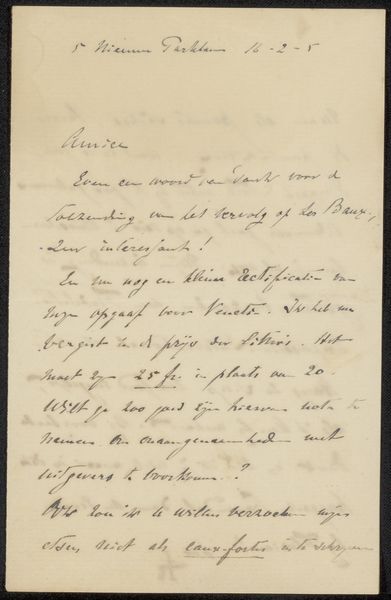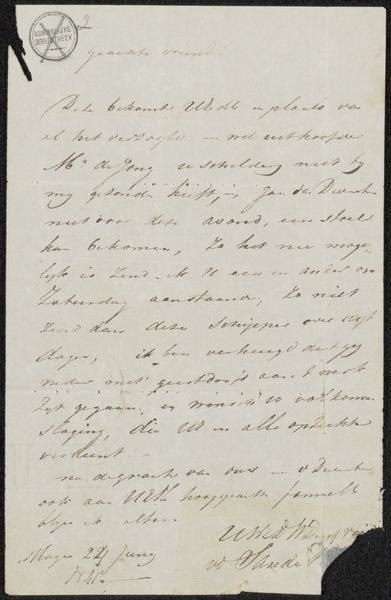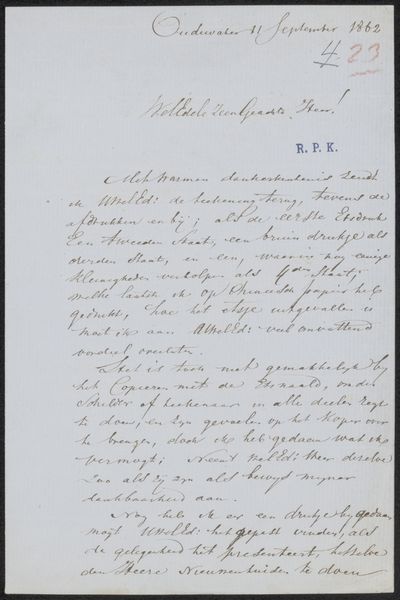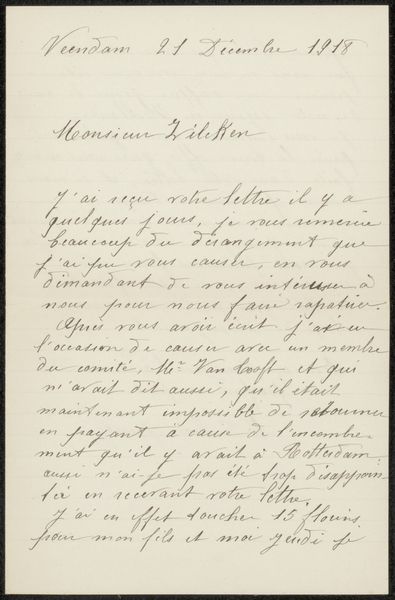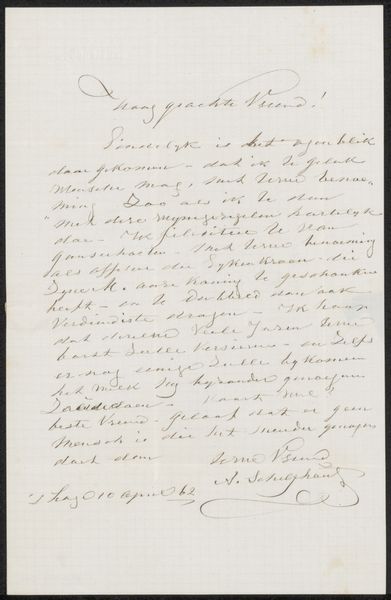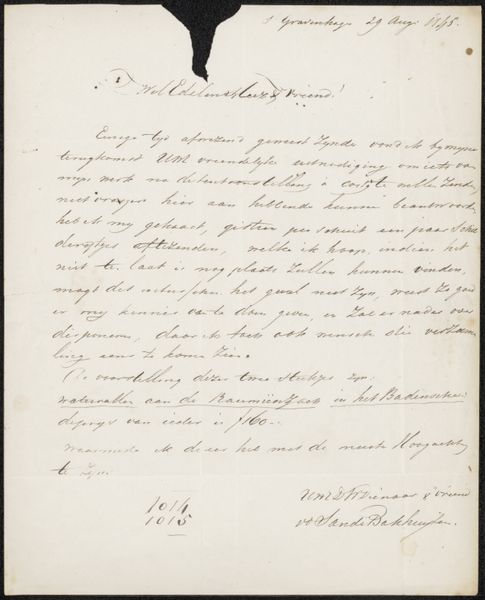
drawing, paper, ink
#
portrait
#
drawing
#
paper
#
ink
#
calligraphy
Copyright: Rijks Museum: Open Domain
Curator: We're looking at "Brief aan Anna Dorothea Dirks," believed to have been created sometime between 1909 and 1930 by André Jolles. It’s rendered in ink on paper. Editor: Immediately striking. There’s such a palpable intimacy evoked by the delicate script against the aged paper. The lines dance—a visual melody— but are faded and fragmented around the page's torn border. I’d suggest it radiates a melancholic charm. Curator: That fragmented feeling speaks volumes. This isn't just a letter; it's a carefully constructed communication meant for a specific reader, using calligraphy that acts as both script and ornament, wouldn't you say? It elevates personal correspondence. Editor: Indeed! The handwriting functions as image here; we're experiencing not simply what is communicated, but how the words take physical form on the page. You have that formal, flourished elegance in places, countered by what feels like rushed scribbling, or crossed-out considerations. Note where words fade and lines disappear. Curator: The choice of calligraphy as the dominant visual element underscores a time when handwriting was intensely personal. Each curve, pressure, and stroke bears the imprint of the writer’s personality and emotions. Editor: Yes. In psychological terms, graphology explores this link, seeing handwriting as a mirror reflecting a writer's unconscious and conscious selves. In our digitized present, handwriting retains almost talismanic meaning. A handwritten card possesses warmth and intimacy no email can convey. Curator: Furthermore, in this work the specific style of script and the antiquated language used reflect nostalgia, or maybe the longing to reconnect to tradition. Perhaps it reflects social standing, too; elegant penmanship was once highly cultivated. Editor: I find myself contemplating what is lost in translation, what visual hints the paper conveys about temporality that machine translation obscures... the frayed edges of memory itself seem materially present here. Curator: It highlights that fragility beautifully. The artist seems aware that this method of communication, with all its nuanced layers of meaning, is fleeting. Editor: Indeed, and I leave contemplating how visual media has shaped this artist’s work and reshaped my perspective, even in appreciating such small moments on paper. Curator: A beautiful conclusion! One small epistolary gesture resonates into vast meanings and visual relationships through memory and language, technique, and style.
Comments
No comments
Be the first to comment and join the conversation on the ultimate creative platform.
